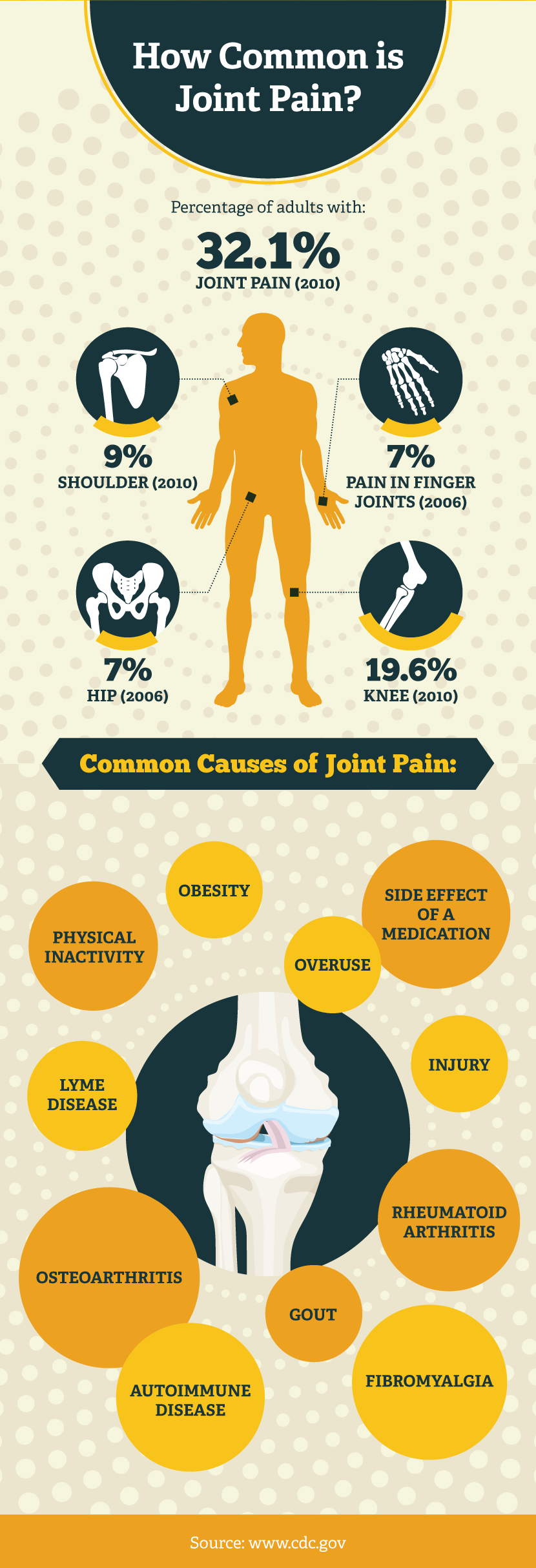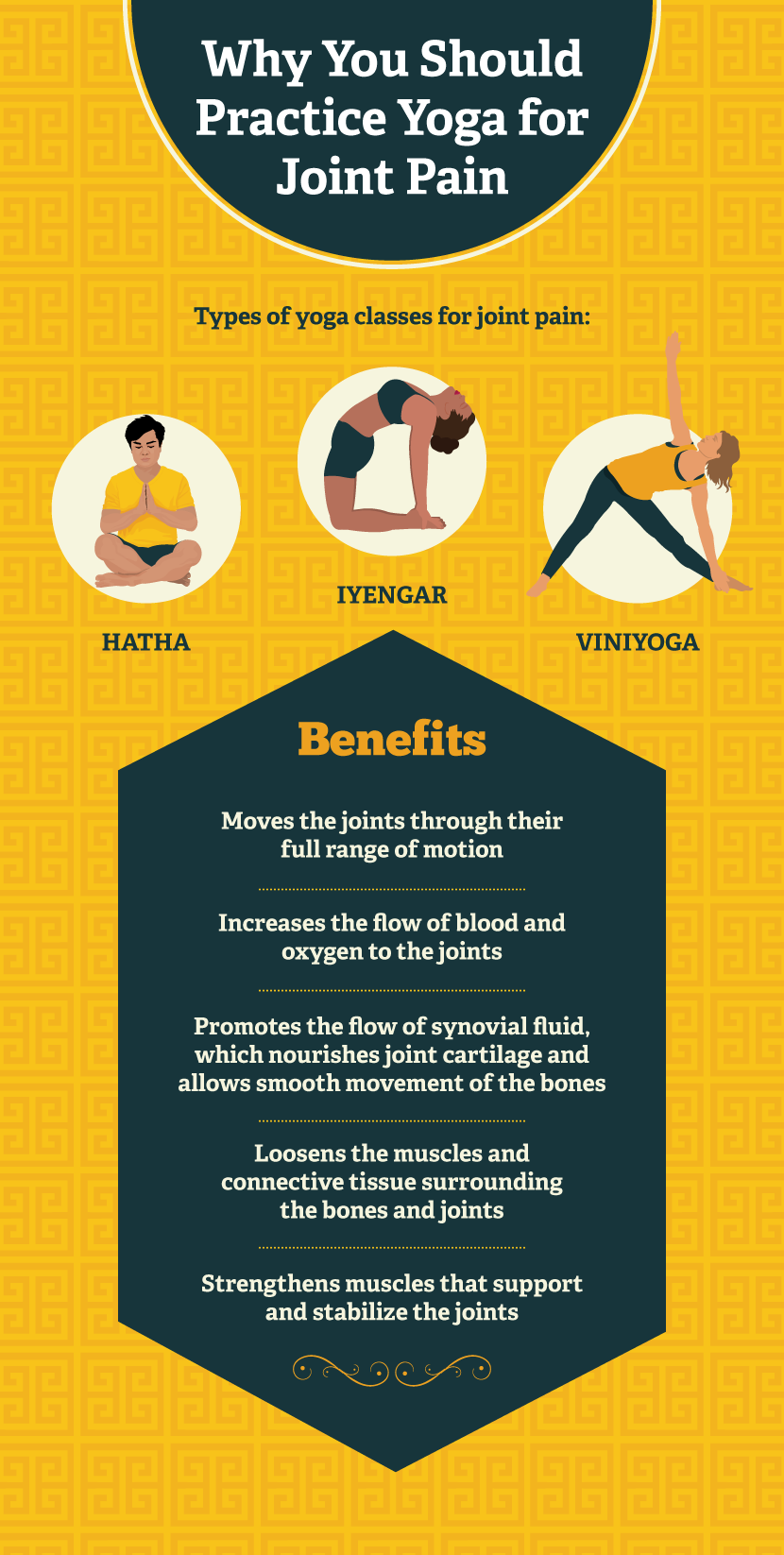Yoga For Your Joints
Do you suffer from stiffness, pain, or swelling in your joints? You’re not alone. More than 30 percent of Americans experience
joint pain at any given time.https://www.cdc.gov/nchs/data/hus/hus11.pdf Pain and disease in the joints is the leading cause of disability in the United States.http://www.arthritis.org/about-arthritis/understanding-arthritis/what-is-arthritis.php
Joint pain can make it difficult to perform everyday tasks or exercise. However, regular movement is necessary to keep the
joints healthy. Yoga, an ancient practice, may be the ideal exercise to prevent and treat the modern epidemic of joint pain.
It’s gentle and low-impact, and it promotes circulation, strengthens the muscles around the joints, increases flexibility, and
improves bone health. Keep reading to learn how yoga can help you keep your joints healthy, mobile, and pain
free.https://www.amazon.com/dp/B006P9S9ZI/
A Pain in the Joints
Whether joint pain comes on suddenly during an activity or develops gradually, it can be debilitating and depressing.
https://www.ncbi.nlm.nih.gov/pmc/articles/PMC486942/
But joint pain is usually inevitable, and you can almost always do something to make it better.
Pain requires assessment and reflection. Is your pain acute, meaning it’s lasted for hours or a few days? Is it a result of
an activity or a repetitive motion? If so, rest and recovery may be necessary and helpful. However, if you’re experiencing
chronic joint pain, meaning it’s lasted months, or years, the prescription is almost always more activity, not
rest.https://www.health.harvard.edu/blog/exercise-is-good-not-bad-for-arthritis-201305086202
Arthritis (a general term used to describe joint pain, stiffness, and swelling) can result from a number of medical
conditions, such as Lyme Disease, fibromyalgia, autoimmune disease, or cancer. More than a hundred distinct types of
arthritis cause joint pain, including degenerative, inflammatory, infectious, and metabolic types. Osteoarthritis, a condition
where the joint cartilage and bone degenerates, is the most common type of arthritis.http://www.arthritis.org/about-arthritis/understanding-arthritis/what-is-arthritis.php
Osteoarthritis usually develops gradually during old age and most commonly affects the hands, knees, hips, or spine. People
used to believe it was an inevitable part of aging or a result of wear and tear from doing too many jarring exercises. Doctors
once commonly prescribed rest.https://www.verywell.com/osteoarthritis-a2-2548488 However, this paradigm is changing. Today, it’s increasingly understood that the joints need
to move regularly to stay healthy, and physical activity almost always makes joint pain better, not worse.https://www.cdc.gov/arthritis/about/key-messages.htm

Use It or Lose It
Instead of a disease caused by too much exercise, the high prevalence of arthritis today may be better explained by the
modern sedentary lifestyle.https://guidelineshealth.com/body-care/is-your-sedentary-lifestyle-affecting-your-joints/ When a person is sedentary, muscles, tendons, and ligaments weaken and can’t properly support
the joints. Moreover, regular movement is needed to circulate synovial fluid, a slippery substance that nourishes and
repairs cartilage, around the joints.http://www.healthline.com/health/osteoarthritis/understanding-aging-and-joints
Nearly 30 percent of the U.S. population is completely inactive, and older people are more likely than younger people to
be physically inactive.https://www.cdc.gov/mmwr/volumes/65/wr/mm6536a3.htm It’s probably not a coincidence that older people are also more likely to experience joint
pain. A 2005 review of 13 randomized trials suggests exercise is a key way to reduce pain and disability in people who have arthritis of the hip or knee.https://www.cbsnews.com/news/7-million-americans-have-artificial-hips-knees/
Many types of movement are gentle and safe for people with joint pain, including walking, swimming, and yard and housework.http://www.mayoclinic.org/diseases-conditions/arthritis/in-depth/arthritis/art-20047971
Yoga, a 5,000-year-old Indian practice with its roots in Hinduism, offers a gentle way to regularly move, strengthen, and
stretch the body, and research indicates it can be healing for the joints.
Yoga for the Joints
Ancient spiritual traditions can be difficult to translate to Western culture. Yoga traditionally combines a series of
asanas (physical postures) with meditation and pranayama (breathing exercises). The therapeutic benefits of yoga may have as
much to do with relaxation and mindfulness as they do with physical exercise.
Research confirms impressive benefits of doing yoga for joint health. In one study, doing yoga helped patients with
osteoarthritis reduce pain and stiffness better than standard physical therapy. In another study, doing yoga three times a
week significantly decreased pain and improved general health, vitality, and mental health in patients with knee
osteoarthritis and rheumatoid arthritis, an inflammatory autoimmune condition.http://www.jrheum.org/content/42/7/1194 In other studies, yoga reduced pain and
increased function in people with osteoarthritis of the hands, and reduced joint pain in breast cancer
survivors.https://www.ncbi.nlm.nih.gov/pmc/articles/PMC3665019/
Yoga classes are offered at gyms and community centers across the U.S. However, not all yoga is the same. If you have joint
pain, do some research and choose your yoga practice wisely. Yoga injuries are on the rise, especially among older adults.https://www.yogajournal.com/lifestyle/study-finds-yoga-injuries-are-on-the-rise-plus-4-ways-to-avoid-them In one study, 74 percent of people who did yoga saw improvements in existing pain, however, 21 percent of people
experienced a worsening of existing pain.http://www.telegraph.co.uk/news/2017/06/28/yogamore-dangerous-previously-thought-scientists-say/

Start Where You Are
If you’re new to yoga and have joint pain, look for a gentle, precise form of the practice. Mild, unforced movements are
the best way to aid the healing process. Avoid overstretching or straining, which can worsen joint pain.https://www.yogajournal.com/teach/synovial-fluid-and-inflamed-joints
A hatha, Iyengar, or Viniyoga class may be the best place to start your practice. Hatha yoga classes usually emphasize
strength and relaxation and are taught at a slow pace. Hatha is a general term, so classes and teachers need to be
evaluated on a case-by-case basis. Iyengar yoga is a specific form of yoga developed by the teacher B.K.S. Iyengar; it
emphasizes precise postures and makes use of props to modify poses when needed. Viniyoga is a specific therapeutic type of
yoga developed by the teacher T.K.V. Desikachar; it’s usually taught one-on-one and individualized for a person’s ability.https://www.verywell.com/what-is-viniyoga-3566878
Beginners with joint pain may want to avoid fast-paced, vigorous classes, such as Power Yoga, Ashtanga, Vinyasa, and
Bikram, where joint strain and injuries may be more likely. No matter which type of yoga you choose, an experienced teacher
will be able to help you modify poses as needed to suit your physical condition.

Too often, pain in the joints leads to a degenerative cycle. It hurts to move, so people move less, making the pain
worse. Yoga is a safe, gentle, and effective way to get moving and increase mobility, flexibility, and strength. Moreover,
even when someone practices yoga to meet a physical end-goal, such as relieving joint pain, it often teaches other
therapeutic skills, such as slowing down and being present.https://www.nytimes.com/roomfordebate/2012/01/12/is-yoga-for-narcissists/the-purpose-of-yoga A yoga practice is an empowering way to increase physical
activity and regenerate joint health and mobility.
Embed the article on your site

